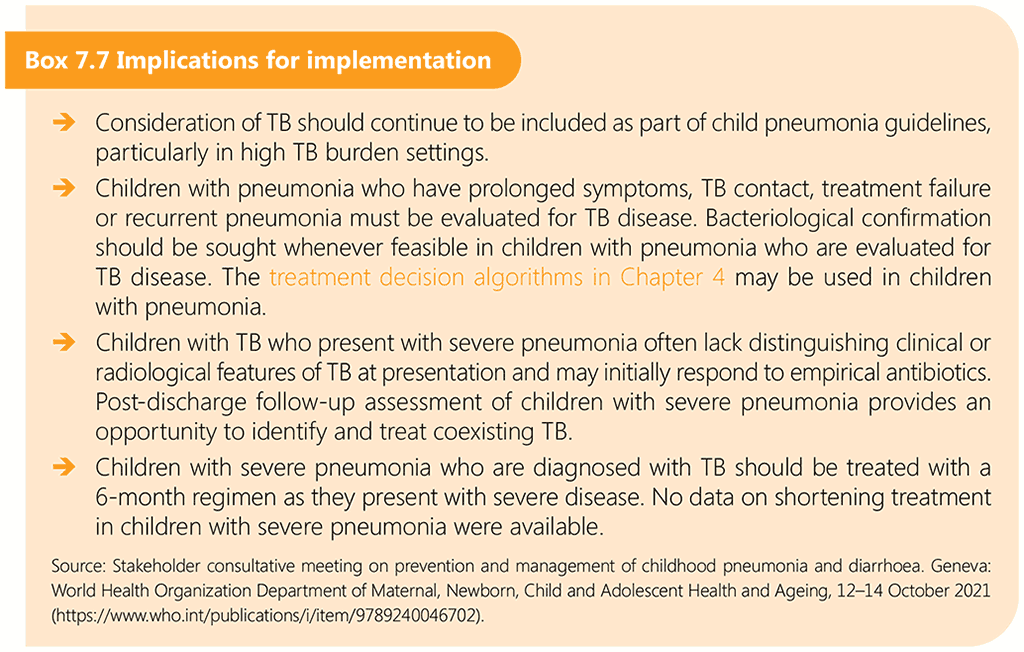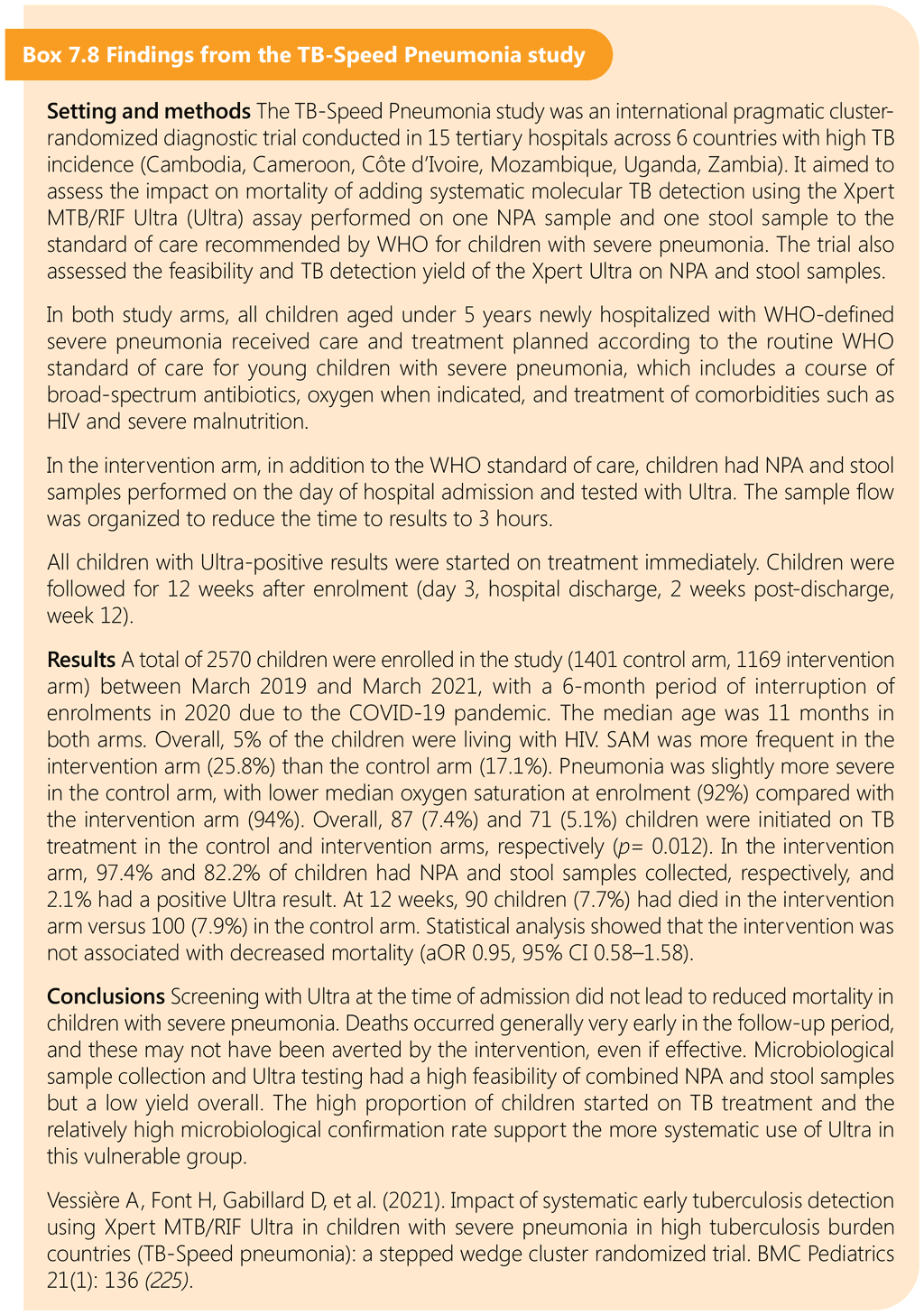Book traversal links for 7.5 TB in children with severe acute pneumonia
TB is a common cause or comorbidity in children with clinically diagnosed pneumonia. A systematic review on TB in acute respiratory infection found that M. tuberculosis was identified in around 5–10% of children with pneumonia aged under 5 years in TB endemic countries (223). Limited data from clinical and autopsy studies suggest that TB was also associated with mortality in these children. Prevalence studies, including the multisite PERCH study (224), confirm these findings.
The review found that clinical features, including persistence of symptoms, had low specificity for diagnosis of TB in young children presenting with pneumonia. TB presents with acute and severe symptoms of pneumonia, which cannot be distinguished (clinically or radiographically) from other causes of pneumonia. Young age and history of a close or household TB contact are known important risk factors for TB in children presenting with pneumonia. However, only a minority of children diagnosed with bacteriologically confirmed TB had a reported close contact. Poor nutritional status increased risk of pneumonia of all causes and is recognized as both a feature of and a risk factor for TB. There were insufficient recent data to determine the current relative risk of TB presenting with pneumonia in children living with HIV.
TB may contribute to treatment failure in children with pneumonia, often following an initial clinical response to empirical antibiotic treatment for pneumonia, presumably because of coinfection with pathogens susceptible to those antibiotics, such as Streptococcus pneumoniae. Therefore, children with pneumonia who have prolonged symptoms, history of TB contact, treatment failure or recurrent pneumonia must be evaluated for TB disease. Box 7.7 summarizes implications for implementation.



 Feedback
Feedback